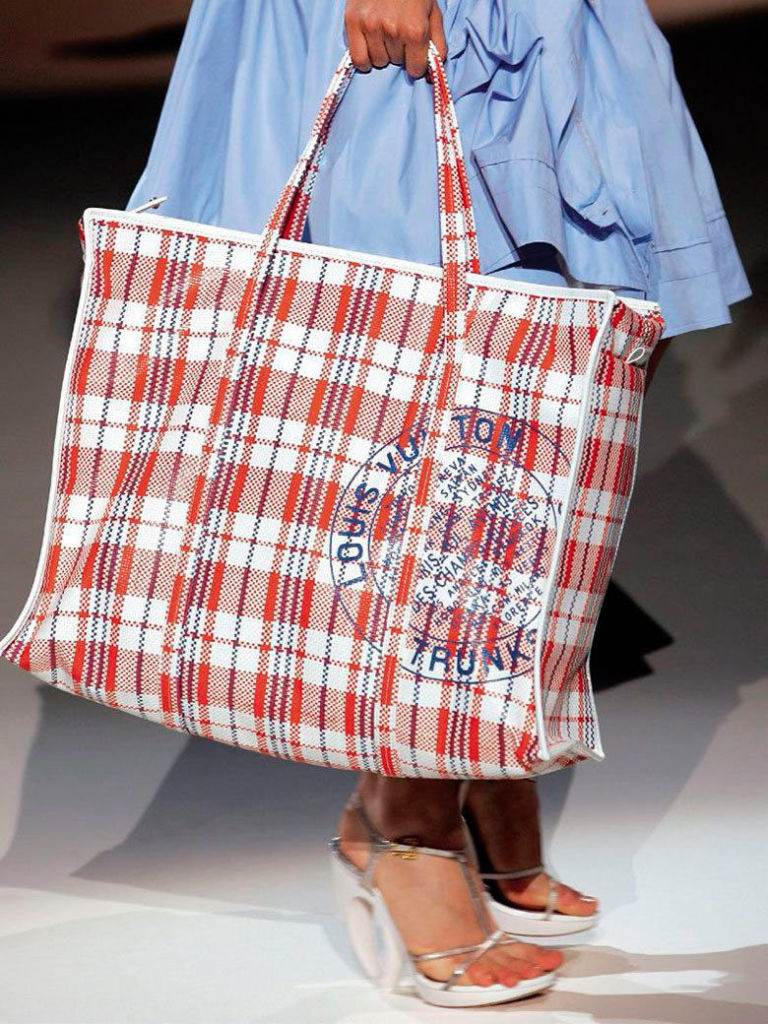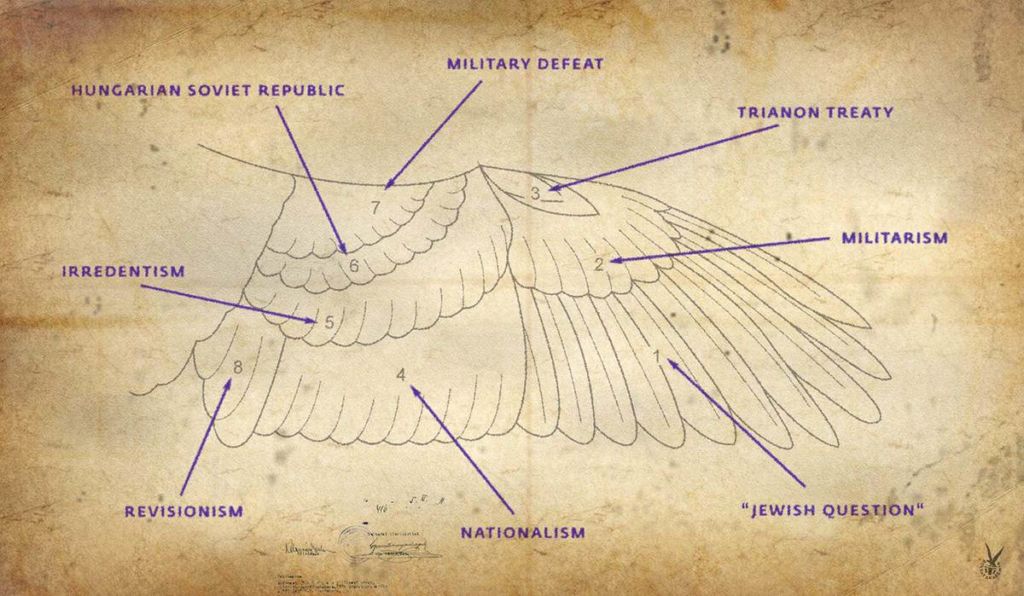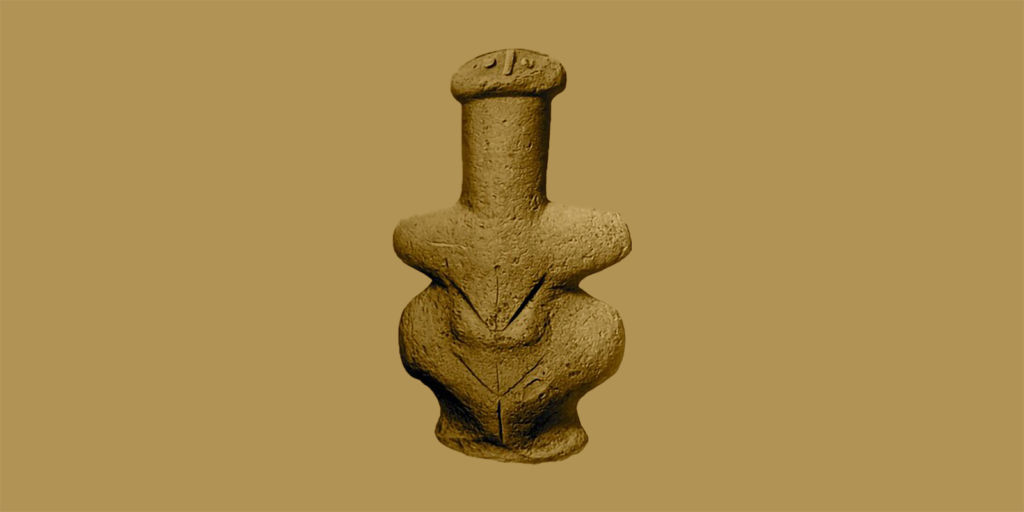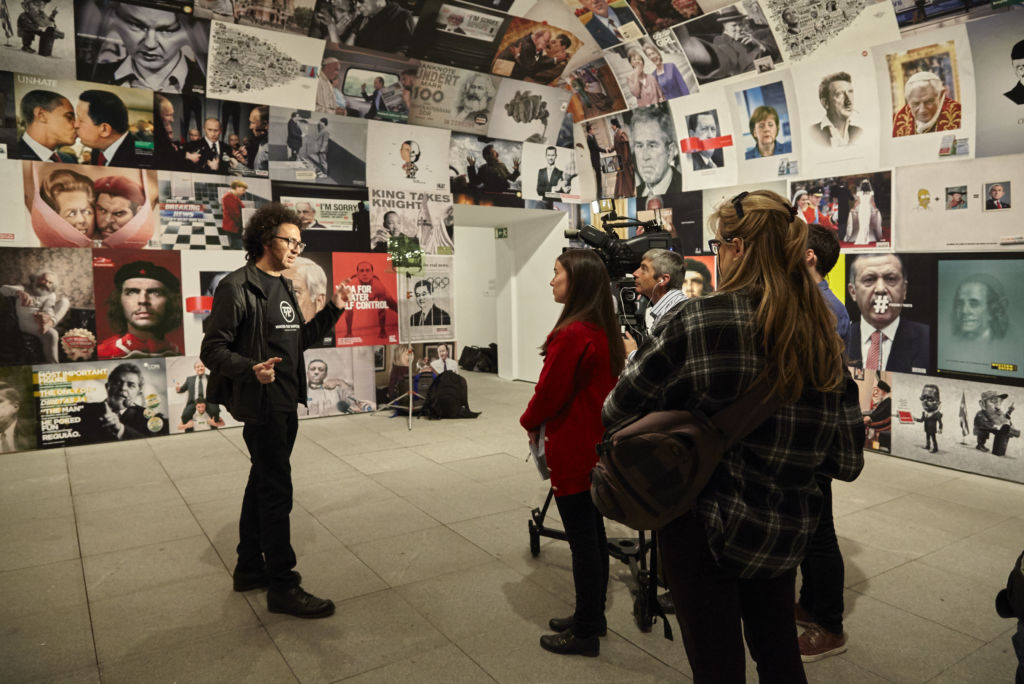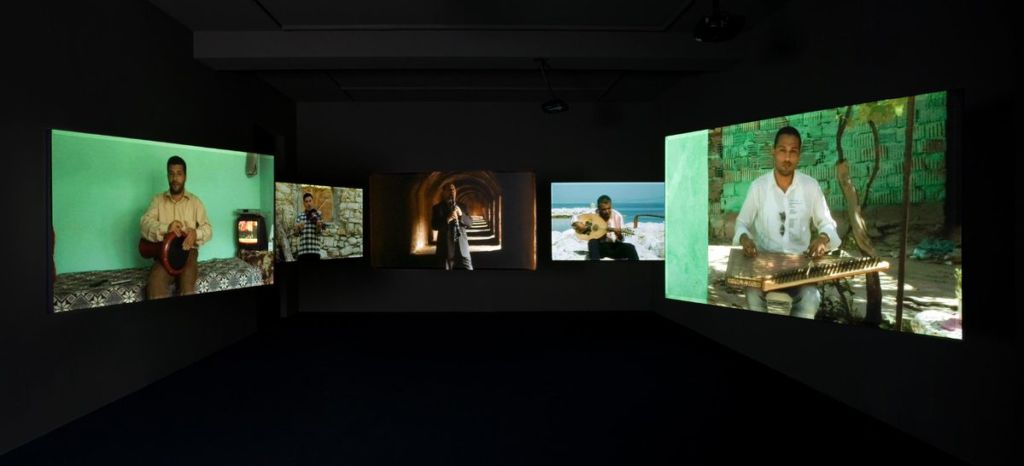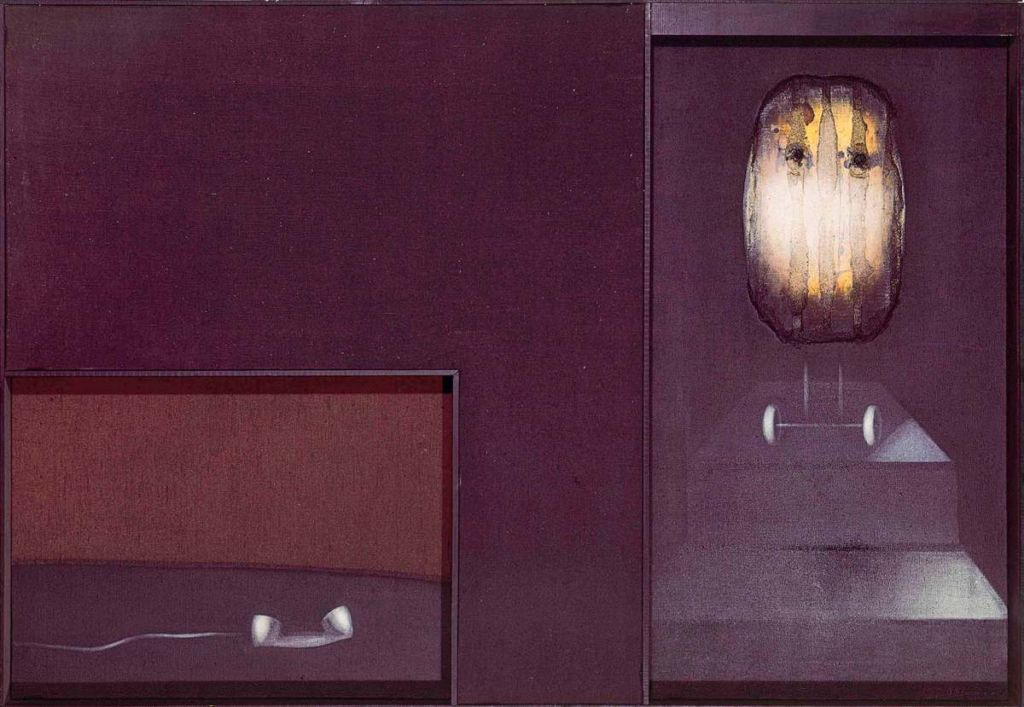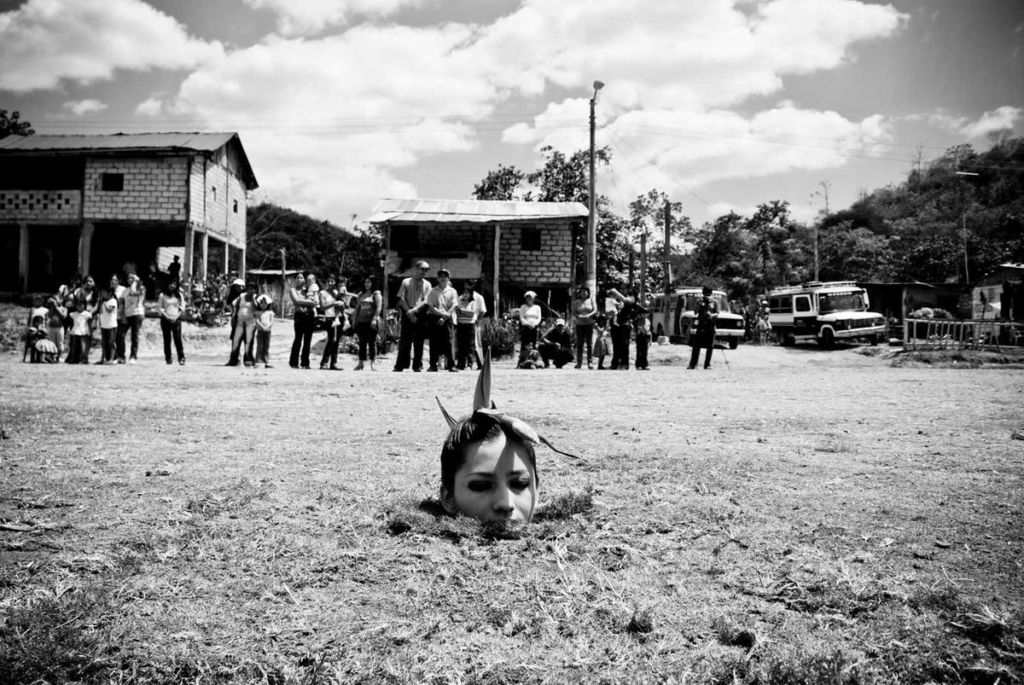We live in an “age of migration”. The geopolitical changes over the last twenty-five years only prove so, showing along the way what role art and culture can play when it comes to the challenges globalization poses to the imagination and representation. The following text discusses the “Barbès bag” created by Marc Jacobs in 2007 for the Louis Vuitton house, an imitation of the popular shopping-bag-turned-symbol of the migrating classes.
Travel and value
In Orson Welles’ The Lady from Shanghai (1947), Michael O’Hara, an adventurer played by the filmmaker himself, seduced by the alluring Elsa Bannister (Rita Hayworth), finds employment as a skipper for her husband Arthur Bannister (a rich lawyer played by Everett Sloane) and finds himself stuck in the middle of a complicated murder intrigue. The film starts with the two male characters engaged in a dialogue that begins something like this: “Arthur Bannister – You’ve been travelling around the world too much to find out anything about it. Michael O’Hara – I’ve always found it very sanitary to be broke”. And ends, a little while later, with the lawyer’s maxim: “Each man has his own idea of happiness, but money is what all of us have in common.” Here in this scene, travel and knowledge are tied together in a verbal exchange about money, that is, about reality. From an economically pragmatic point of view, real life is abstracted value, since money constitutes a universally common convention, it is what links us, what we all share.
For the Louis Vuitton spring-summer collection in 2007, Marc Jacobs, the label’s artistic director at the time, brought out a red, white and blue tartan shopping bag, a version of the bag known as le sac Barbès (“Barbès bag” or “Ghana-Must-Go1”, “Dial Chamal” [bag of the North], “Zimbabwe Bag”, “Chinatown Tote”, “Türken Koffer” [Turks’ suitcase]), originally sold by Tati shops in France starting in the early 1970s2. According to Marc Jacobs: “We wanted to create something very fresh, very feminine, very pretty.” At the same time, the brand’s ad slogan for these travel bags was: “A journey brings us face to face with ourselves.”
A few years ago, I attended the Venice Biennale with friends. My experience, in the 35°C July heat with 95% humidity and city center packed 99,5 % with tourists, pretty much fit the predominant trend when it comes to these kinds of cultural events. A trend of surrounding international contemporary art gatherings with an increasing number of side-programs and collateral exhibitions, wrapping a dense network of cultural hybrids and crossovers around a central institutional core. The Venice Biennale events are particularly spread throughout the city, reflecting the city’s singular history and topography, and involving a multiplicity of itineraries and parcours that combine the local with the global. In between exhibitions, not far from the Scuola Grande di San Rocco, we came across some street hawkers who displayed their counterfeit wares on sheets laid directly out onto the sidewalk. Since my friends seemed interested, particularly in the “made in China” luxury bag knock-offs (of Louis Vuitton, amongst others), we took the time to talk with one of the vendors. It turns out he had worked, for the most part, in countries along the Mediterranean, and in addition to his mother tongue (he was originally from the Congo) and English, he could get by in Italian, French and Greek. Next to him was a big plastic red and blue tartan shopping bag that he used to carry around his merchandise.
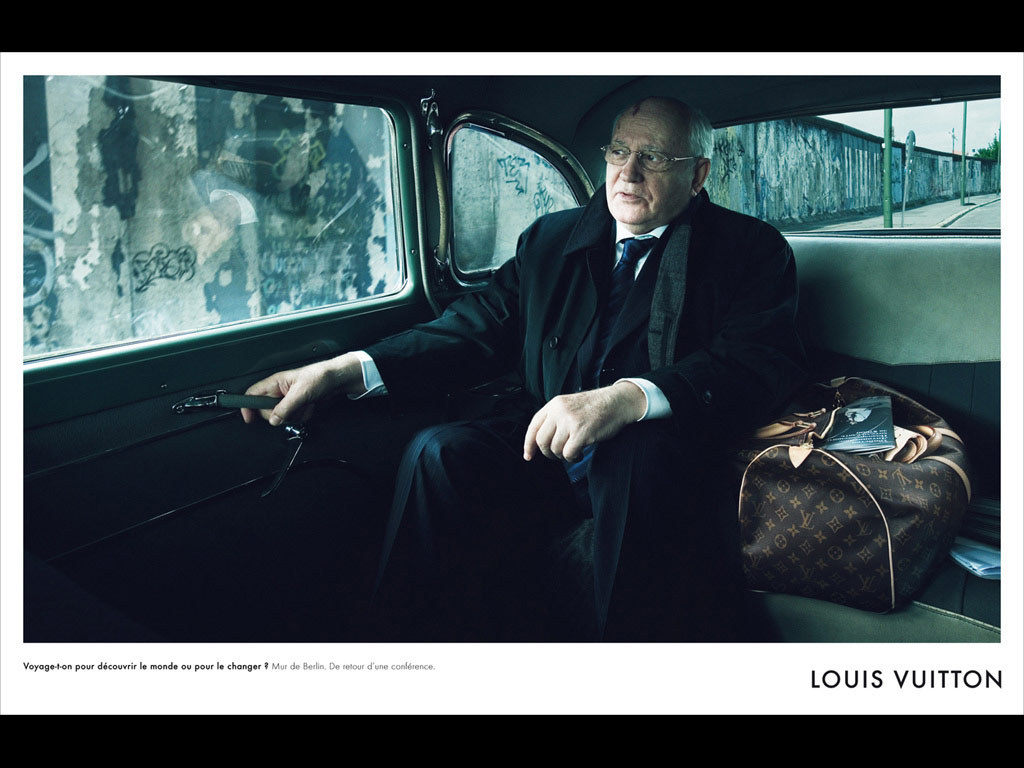
LVMH in defense of national heritage
Since 2005, LVMH has waged a fierce war against counterfeiting and abuse of the label’s name. The company was caught up in litigation for over six years with Google regarding search terms that directed Internet users to sites offering counterfeit fashion accessories. In June 2006, the Court of Appeals in Paris ordered Google and its French affiliate to pay 300.000 euros in damages and interest for “violating the rights of brand names, unfair competition and false advertising”. In July 2010, the Court of Cassation rejected this decision and sent the case before the Court of Justice of the European Union, which proceeded to rule in favor of Google3. The case, remanded to the appeals court, was settled in 2014 through a cooperation agreement between the two parties.
In June 2008, following two years of legal procedures, another Internet heavyweight, eBay, was sentenced by the Tribune de Commerce (commercial court) in Paris to pay LVMH the sum of 38,6 million Euros –reduced by appeal to 5,7 million—for having authorized the sale of counterfeit items on its website. This decision, which fell one month after eBay was sentenced to pay 20.000 euros for selling counterfeit Hermès bags, was just one of many episodes in a long series of clashes pitting the world leader in online auctions against the luxury industry. As for LVMH, the company considers the decision to represent “an important step in the protection of brands and designs against parasitic practices,” and congratulated the tribunal for its “important contribution to the protection of creative works which make up an important part of our national heritage.”4
Alongside these battles against counterfeiting, LVMH has developed a sophisticated marketing strategy based on investing in culture and support for the arts. In the words of Bernard Arnault, the group’s CEO and a major collector of contemporary art, over the past years Louis Vuitton has “found its soul” in philanthropy. Following the example of his rival François Pinault, in 2006 he created the Louis Vuitton Foundation for creation and contemporary art, which opened its doors in 2014 in Bois de Boulogne in Paris, housed in a building conceived by star architect Frank Gehry. “The foundation’s goal will be to promote culture and France throughout the world,” he declared.
Migration and globalization
From the catwalks of Paris to the sidewalks of Venice, by way of European court hearings and the virtual spaces of the Web, national heritage, the global cosmopolitanism of art, and economic globalization find themselves intertwined in a way that remaps the cultural economy (how culture is produced, shared and hierarchized) into a territory of migration5 — symbolically (a migration of meanings) as well as physically (the migration of individuals). As a process, migration displaces objects to the interstitial realm between global and local, copy and original, center and periphery, main event and collateral effects. Street hawkers could be considered amongst these collateral effects, though their presence can also be found elsewhere, in places unrelated to the art world, yet very much related to transit. In our case, the artistic context accentuates a phenomenon that has flourished so greatly over the years that it now seems normal, and therefore transparent. Marc Jacobs’ sac Barbès appears in this context to be what we might call a metaphorical object—the product of movement, transit, occurring where three different registers of displacement collide: semantic displacement, migratory flux, and the circuit of value. The displacement produces Knowledge. However, the difference between casual tourism, a fashion show and economic exile depends on the relationships that each of these three registers of individual mobility maintains with the mobility of meanings and the mobility of commodities.
Globalization is not the pure and simple abolishment of the polarity between center and periphery, but the constant reconfiguration of their rapports. For American art critic Hal Foster, while the global market delocalizes production toward the periphery, “a reverse migration flows into its urban nodes and is there internally marginalized.”6 The margin is assimilated by the globalization movement, celebrated and at the same time reified, caught in the spotlight and as such, rendered invisible. Actual marginality is not erased, only displaced from the periphery to the center, internalized and globalized to the point where it becomes a crime and, at the same time, an alibi for our societies.
The Barbès bag: Variations on High and Low
Though made of leather and through the inimitable know-how of the artisans at Louis Vuitton, as well as stamped with the brand’s initials, the 1200-euro shopping bag created by Marc Jacobs was a direct reference to the inexpensive plastic ones used by migrants and hawkers to carry their counterfeit merchandise. Even the name is a topographical reference to the art of counterfeiting, as Barbès is a neighborhood in the 18th arrondissement of Paris associated with the sale of imitation luxury goods. Other major luxury brands have since been inspired, in one way or another, by this type of bag: Céline designed dresses inspired by the ‘Barbès bag’ in 2013; Balenciaga brought out its striped shopping bags in 2016. The high-brow ironic wink to the low-brow is more than obvious; it is part of a long heritage of modernist and postmodernist appropriations and recyclings. In other words, the institutional and commercial capitalization on the culture of the masses is nothing new. But in this particular case, the object, in a sense, goes around and comes back, emerging from the circuit of its own appropriation-counterfeiting, illustrating what American theorist Frederic Jameson calls “the consumption of sheer commodification as a process7”.
I wondered about all the possible ways of combining Louis Vuitton bags and le sac Barbès: genuine Louis Vuittons filled with Barbès rip-offs, authentic Barbès bags filled with Louis Vuitton imitations, etc. It seemed to me a likely template or conceptual model for an artistic project, a critical essay or just a joke on the contemporary complexities of the relationships between original and copy, high culture and mass culture, symbol and value. And yet as a metaphorical object, what makes a Louis Vuitton Barbès bag special, its defining characteristic, is the way it splits kitsch in two, between “elite kitsch” and “mainstream kitsch”, that is, between, on the one hand, a trivial aesthetic endowed with luxury-industry cachet that aspires to the high-brow, and on the other hand, the same aesthetic but without the cachet. On one end, it materializes the pure abstraction of the added-value production processes, and on the other, it purports a quality that escapes the interchangeability of value.
The notion of value designates two diametrically opposed things in aesthetics and political economy: for one, the quality of an object that makes it singular, and for the other, how it inserts itself into the general sphere of equivalences. The contradiction between an object and its fungibility (that is, its interchangeability, which involves erasing its distinctive characteristics and identity in order to reduce it to an abstract number value, its price) is the starting point for a Marxist theory of value8. After the division of an object into use-value and exchange-value, the former is subsumed by the latter because goods are equivalent and interchangeable insofar as their relationships remain quantifiable. “[…] Use value becomes the form of manifestation, the phenomenal form of its opposite, value.”9 In the initial division of value (into use/exchange) we read an opposition, but also a dialectic, between quality and equivalence10 : on one hand, the quality stands opposite an equivalence as its contrary, but on the other hand—the history of modernity has shown it–value relies on quality to feed the fungibility process and thus create added-value. It must produce its own contrary to integrate it in order to recycle itself and thus assert itself as a reality.
Seen under this prism, the Louis Vuitton Barbès bag is emblematic of an approach to the cultural economy staked on the collapse of the value of authenticity (of the possibility of distinguishing between an original and a copy), all while operating a new, arbitrary division (elite kitsch/mainstream kitsch) that replaces the hierarchical oppositions that kitsch itself is thought to liquidate (since its 19th century origins, the notion of kitsch has grown synonymous with the qualitative indistinctiveness and leveling of differences existing between the genuine and the inauthentic). The added-value becomes a substrata of genuineness and not the reverse: the latter is not abolished but reproduced as an abstraction of itself, following a process in which “the quality of things turns from their essence into the arbitrary phenomenon of their value11”. In other words, the initials count for more than the object: it is not any aesthetic aspect of the latter that justifies its value, rather its value (which is the label’s value) that becomes itself a quality. You could say that Marc Jacobs wanted to create a product that would resist being counterfeited, a product whose imitation would have no raison d’être, and he clearly succeeded. But it is an act that betrays, in its very playfulness, what German philosopher Theodor W. Adorno calls the deception of genuineness in a society dominated by exchange:
The deception of genuineness [Echtheit] goes back to bourgeois delusion regarding the exchange-process. What appears genuine, is what commodities and other means of exchange can be reduced to – above all, gold. The genuineness abstracted like a proportion of a fine metal turns, like gold, into a fetish. Both are treated as if they were the substrate, which is nevertheless in truth a social relationship, while gold and genuineness express only the fungibility, the comparability of things […]12.
Of course, here we are not talking about gold, but money. But the fact remains the same: as a mass-produced product, affordable and disposable, the original bag (which one could qualify in this case as “genuine”) never laid any claim on being authentic. This ambition, on the other hand, is characteristic of its luxury imitation (it is tempting to say “counterfeit”) and emerges the moment when migration, as a social phenomenon, is subsumed by the commercial circuit. The Louis Vuitton Barbès bag shows that genuineness is fake in as much as it is borne from the very process of counterfeiting; it is itself the child of the cultural impoverishment against which it cries war.
Let us note in conclusion that the Barbès pattern has not only been revisited by the big brands, but also by stylists and designers who are second or third-generation African immigrants in France and see in it a way of highlighting their double cultural identity. Lamine Kouyaté, a designer with origins from Mali and director of the Xuly Bët brand, says this about the pattern: “I’ve always used it. I made small cases with it, parkas, suits. I also used it to build a totem for a dance piece by choreographer Faustin Linyekula. That’s how I could create a link between the country of my origins and the one where I live13.” And yet in Mali, the Barbès bag is known as a “siramadia”. “This Bambara term paradoxically means the African traveller who could not find his fortune in Europe, in that he returns with plastic bags in hand14.” At the same time, if Sakina M’sa, a designer from the Comoro Islands, can declare that the Barbès bag “inspires fashion or design because it also equals migration and recalls a globalized world in which all borders are open15,” the refugee crisis of the 2010s clearly demonstrates that the borders of this globalized world are far from open, or at least not open to everyone.
This text opened with an excerpt about travel as a metaphor for value and continued unfolding around the “Barbès bag” as a metaphoric object revealing the contradictions that arise once kitsch is promoted to official culture and “national heritage”. By opting to situate itself at the intersection of aesthetics, economics and culture, it united distant objects and cultural events (the bag designed by Marc Jacobs and the mass-market model that inspired it, a film by Orson Welles and the margins of the Venice Biennale) in the hopes of emphasizing the gap between the realities that these things derive from and refer to. Although migration is not a phenomenon exclusive to globalization, the goal was to show how the latter fosters mobility of people within a specific and complex constellation of exchanged goods and shifting meanings. From this standpoint, the bag sold by Louis Vuitton acquires a paradigmatic value. By inverting the appropriation process at the very origin of counterfeited luxury items, it constitutes a kind of “reverse falsification” or an “authentically inauthentic” object. To this extent, it says a lot about what Turkish researcher Seyla Benhabib calls the “simultaneous arrival of global integration and cultural fragmentation,16” about the economic standardization of the world, and in parallel, the radical intensification of social divisions and power relationships.
Editor: Vincent Simon
Translation by Maya Dalinsky
1.This term refers to the expulsion order decreed in 1982 by Nigerian president Shehu Shagari against the millions of Ghanaians established in Nigeria. Katia Dansoko Touré, “Genèse et postérité du sac Tati, accessoire de mode d’un monde globalisé”, 26 April, 2019.
2.Founded in 1948, the Tati shop, which was the first to sell this type of inexpensive plastified shopping bag, opened its main store on Boulevard de Rochechouart in the Barbès neighborhood of Paris. Thus the bag’s namesake, le sac Barbès (Barbès bag).
3.The Court of Cassation, which reviewed the ruling by the Court of Justice of the European Union, found that “the provider of an Internet referencing service which stores as a keyword a sign identical with a trademark and organizes the display of advertisements based on that sign, does not make use of it in a manner comparable to that of a trademark, and therefore does not commit an act of copyright infringement”. Andréa Fradin, “Google (re)marque un point dans son procès contre Vuitton”, 15 July, 2010.
5.Stephen Castles, Mark J. Miller, The Age of Migration: International Population Movements in the Modern World (Macmillan, London, 1993).
6.Hal Foster, “Against Pluralism”, in Id., Recodings. Art, Spectacle, Cultural Politics (The New Press, New York, 1999), p. 214, note 19.
Fredric Jameson, Le Postmodernisme ou la logique culturelle du capitalisme tardif (Trad. : F. Nevoltry) (ENSBA, Paris, 2007), p. 16.
8.Karl Marx takes up the concept of work-value as developed by David Ricardo, for whom the value of an item depends on the amount of direct and indirect labor required to produce it, but, contrary to this, he refuses to see labor as a commercial good like any other since, for him, work constitutes the measure of all commercial value. The value is what serves as an intermediary, that is, as the shared unit of reference enabling the exchange of different goods with different end-uses.
9.Karl Marx, Le Capital [1867] (Trad. : J. -J. Roy) (Flammarion, Paris, 1985), book i, first chapter, section 3, commentary in Georges Labica (éd.), Dictionnaire critique du marxisme (PUF, Paris, 1982), p. 368-370.
10.The use-value is one of the object’s distinctive characteristics or qualities, the aesthetic value is another. The former does not identify with the latter, but both may stand opposite to equivalence. There is an analogy, a similarity of oppositions between use/exchange, on the one hand, and aesthetic/equivalence on the other.
11.Theodor W. Adorno, Minima Moralia (Trad. : É. Kaufholz et J.-R. Ladmiral) (Payot, Paris, 2003), p. 305. English source online, translation © 2005 Dennis Redmond
12.Ibid., p. 210.
13.Katia Dansoko Touré, art. cit.
14.Ibid.
15.Ibid.
16.Seyla Benhabib, “Renverser la dialectique de la raison : le réenchantement du monde”, in Emmanuel Renault (Éd.), Où en est la théorie critique ? (La Découverte, Paris, 2003), p. 78-79.
